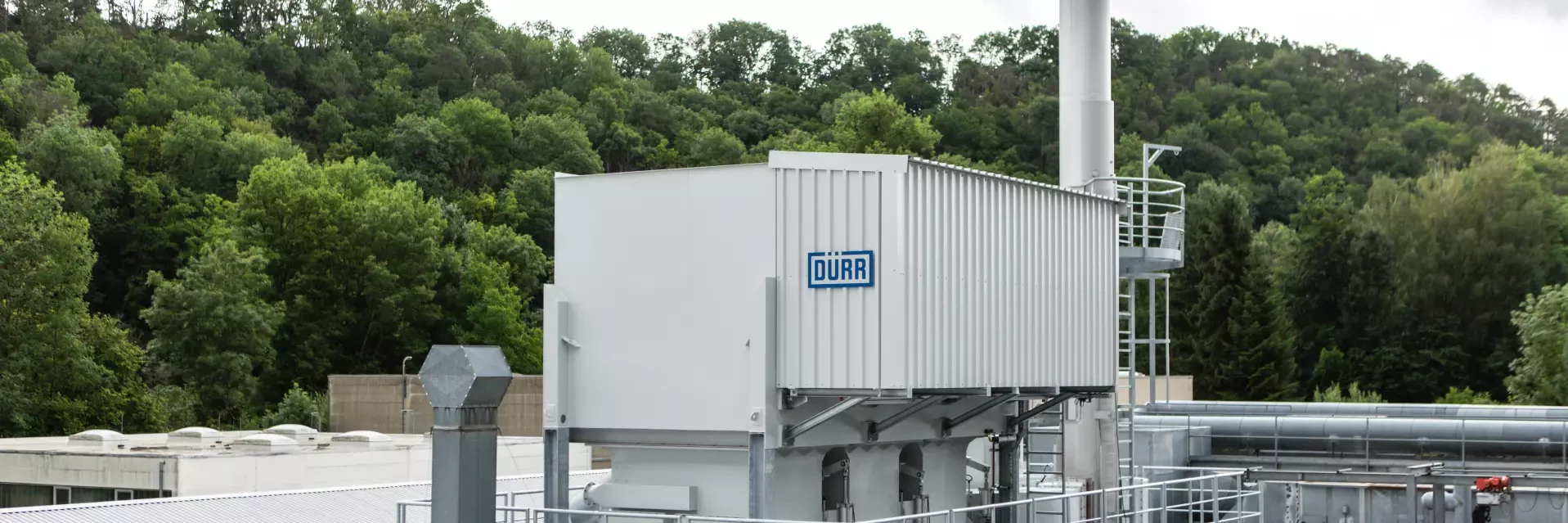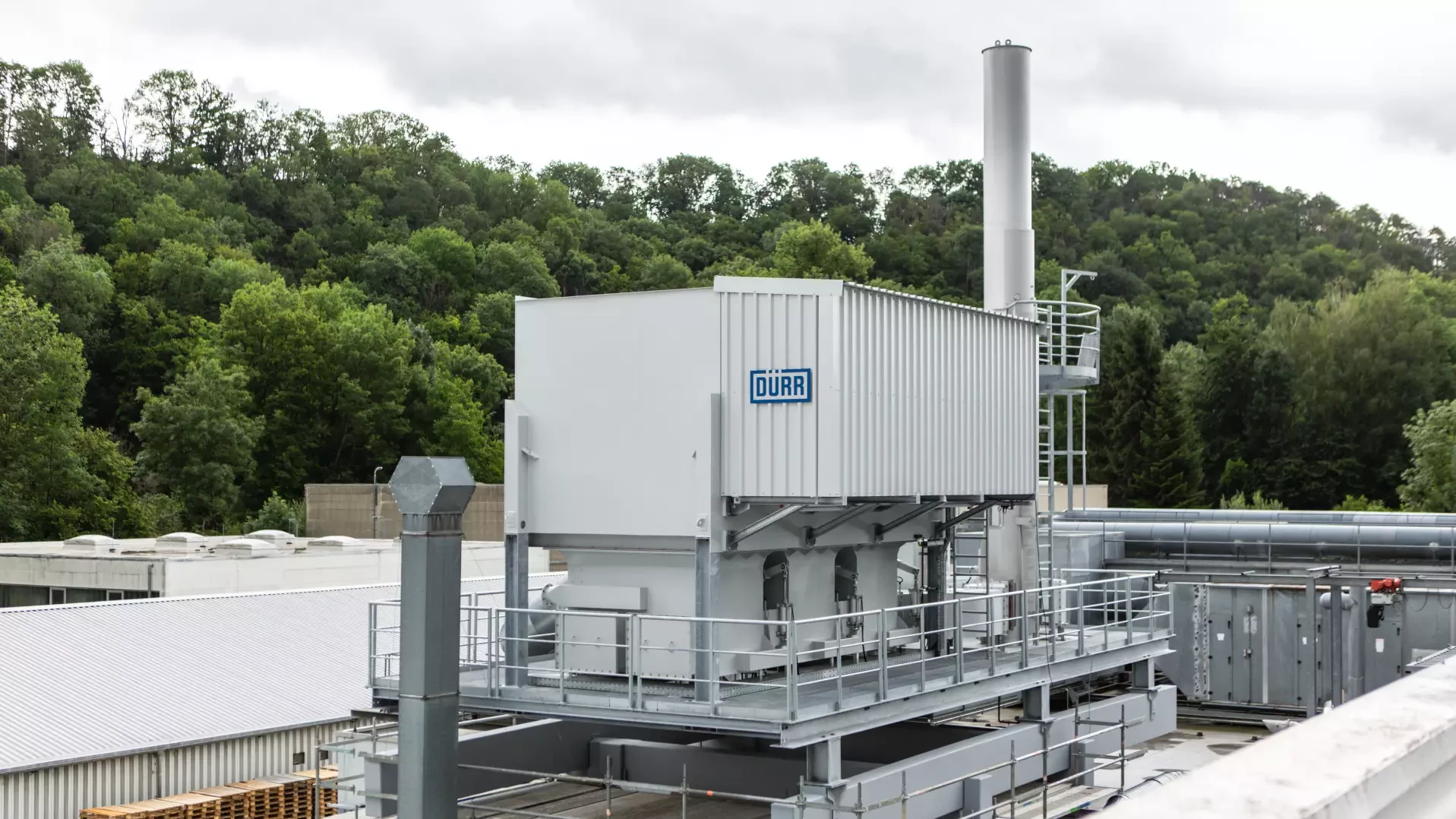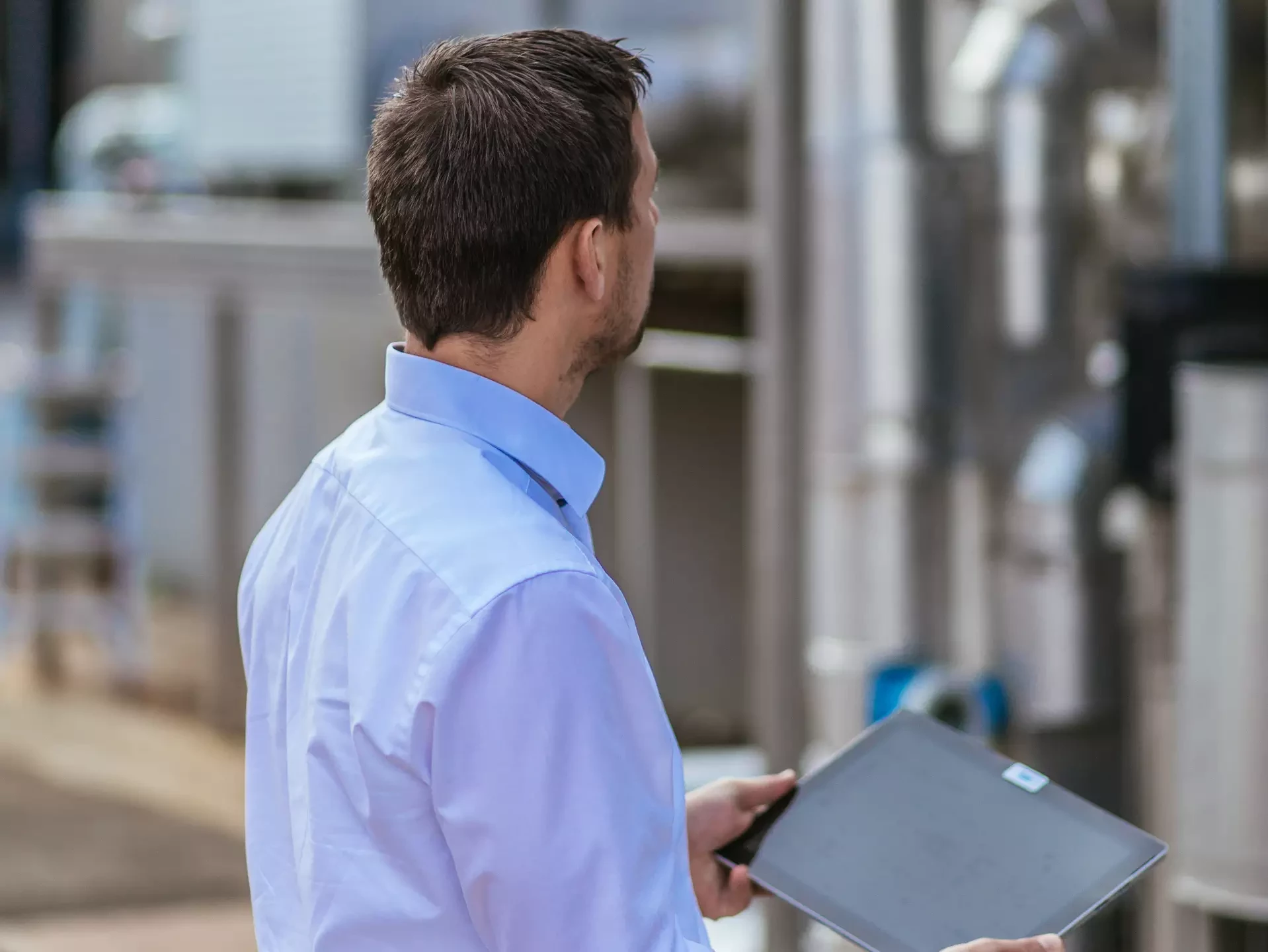There are two ways of optimizing mechatronic systems: through the use of state-of-the-art hardware or software products. With its new digital service portfolio, which is available for both existing and new systems, Dürr has its eye on the latter. The modular solutions in Dürr’s DXQequipment.operation product family for air pollution control systems support the customer in a number of ways: They improve system transparency, process efficiency, and system availability. They also provide an immediate remedy in the short term, for example in the event of malfunctions or system downtimes. Even older systems can be easily retrofitted without the need for an on-site visit by technicians.
Rapid assistance in the event of plant downtimes
Schur Star Systems, an international manufacturer of packaging solutions, availed of Dürr’s digital service offering after its industrial air pollution control system went down. Dürr’s regenerative thermal oxidation (RTO) system is a key component of production at Schur Star Systems. It purifies exhaust air streams from several upstream production systems before the exhaust air is released into the environment. The failure of the air pollution control system resulted in the production lines having to be shut down, which is why a solution that could be implemented at short notice was needed. Schur Star Systems opted for the digital service package. Once the customer had installed the security-certified IoT Edge gateway in the control cabinet of the RTO, Dürr technicians were able to immediately access operating states, valve positions, and alarm codes and then identify the problem and upload a modified control program via remote access. This meant the system could be returned to operation quickly and cost-effectively – compared to an on-site visit – and the upstream production was able to start again. Pascal Englert, Vice Operation Manager, Schur Star Systems, explains: “Dürr’s digital solutions impressed us. Since then we have also been using the other modules to prevent future failures as well as to increase the process efficiency of our air pollution control.”
Modular structure with three expansion stages
The digital service packages for environmental systems are available in three different expansion stages, depending on the desired functionality and the available budget. The basis of the IoT-ready package is the IoT Edge gateway, which enables both industrial remote access as well as the continuous collection of process data. The IoT Edge gateway can optionally be connected to the Internet via mobile radio or the operator network. In case of malfunctions or system downtimes, Dürr technicians can analyze possible causes quickly and effectively using state-of-the-art software solutions. This can be done from the office, without the need for an on-site visit. The IoT Edge gateway is ready for operation immediately after installation in the control cabinet, as the Schur Star Systems example shows.
IoT applications
The second expansion stage includes access to an IoT application consisting among other things of dashboards for visualizing operating information, a data explorer for quick viewing of process data, a virtual image of the system as well as the Smart Rules module for a continuous comparison of the nominal and actual process values. As part of this, process data is visualized in real time and analyzed by algorithms. In case of deviations from the defined normal condition, the software automatically sends messages (via e-mail or SMS) to a predefined group of recipients.
Monthly reports and intelligent models
A comprehensive monthly report containing an analysis of the most important process data by Dürr experts gives system operators a quick overview. The monthly report provides insights into complex issues, among other things by evaluating the operating states and alarm messages, calculating key performance indicators, and making recommendations for improving the process sequences. The third expansion stage additionally uses intelligent models, which analyze deviations and trends on the basis of statistics and machine learning and forecast when maintenance will be required.
Detecting potential for optimization with data analytics
The continuous analysis of process data makes it possible to leverage previously unused optimization potential to improve resource efficiency. By modifying the control program and optimizing process parameters, it is possible, for example, to increasingly operate exhaust air pollution control systems autothermally, which significantly reduces gas consumption. The need for mechanical modifications can be identified by analyzing the process data. In addition, the intelligent models enable predictive maintenance, which not only increases the availability but also avoids over-maintenance of individual components.



